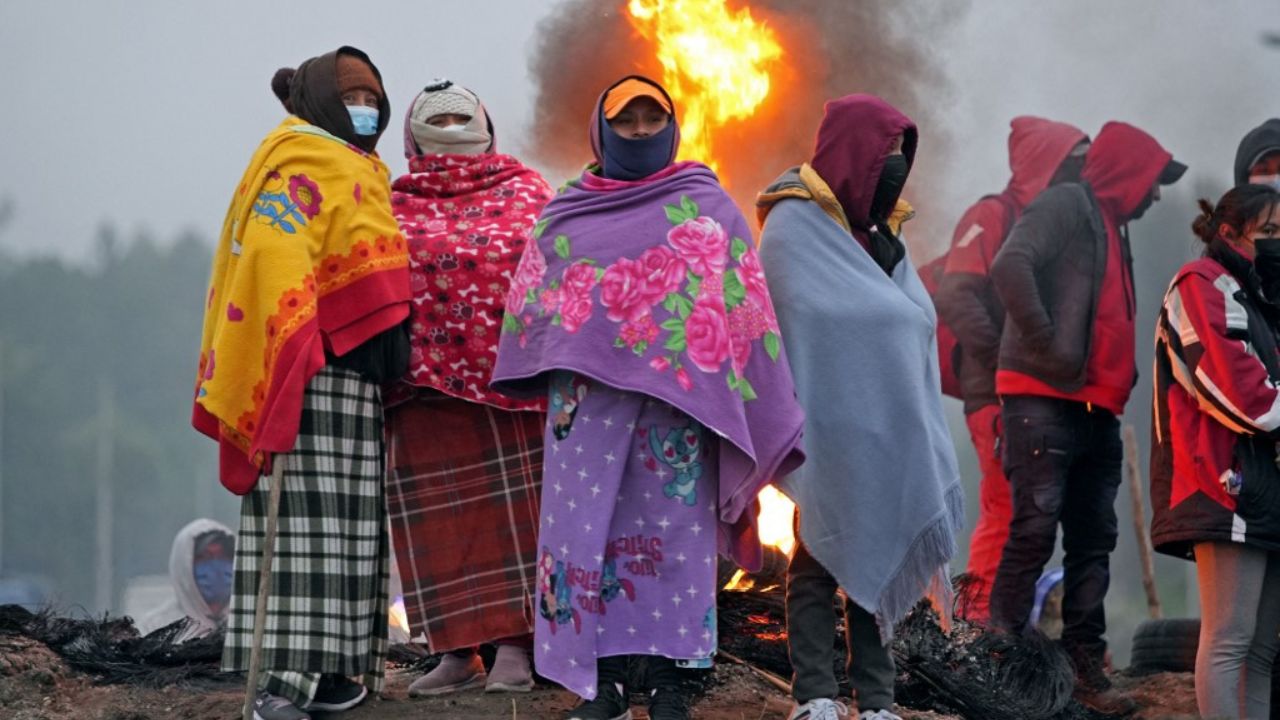RIO DE JANEIRO, BRAZIL – On Tuesday, June 21, an official source said that Ecuador’s oil production, its main export item, fell by about 100,000 barrels per day (bd), representing 21% of the total, amid a wave of indigenous protest.
“Today, we may have already lost 100,000 barrels of oil per day,” said the manager of state-owned Petroecuador, Italo Cedeño, to Radio Municipal de Quito.
Organized by the opposition Confederation of Indigenous Nationalities (CONAIE), the protests against the government of conservative President Guillermo Lasso, which have been going on for nine days, are calling for a reduction in fuel prices.

The demonstrations, with road blockades in more than half of Ecuador’s 24 provinces and marches in several cities, have affected the crude oil production of Petroecuador and other companies such as China’s PetroOriental.
In terms of production, “we are falling precipitously because not only have they (the demonstrators) dedicated themselves to affecting the production stations, but now they have also gone against the power plants,” said Cedeño.
“Without electricity generation, it is impossible to produce oil,” he added.
According to the Petroecuador manager, because of the protests, pumping by secondary pipelines to the Amazonian town of Lago Agrio (east), from where the crude is transported to ports on the Pacific by the country’s two main pipelines, has also been suspended.
Conaie is demanding a reduction to US$1.50 per gallon of diesel and US$2.10 per gallon of regular gasoline.
In almost a year, the price of diesel increased by 90% (to US$1.90) and gasoline by 46% (to US$2.55). Since last October, these values have been frozen due to pressure from the indigenous people.
According to the Ministry of Economy, Ecuador exports oil but imports fuels it sells with subsidies that have demanded around US$2.8 billion annually between 2014 and 2022.
Cedeño called for “a little more effective” military action to restore order in the Amazon, where the wells are located.
Ecuador’s oil production between January and April was 481,000 bd (78% by Petroecuador), of which 65% was exported, according to the Central Bank.
The state-owned company estimated that if the demonstrations continue, its production could fall progressively to 129,000 bd by June 30.
LIGHT AT THE END OF THE TUNNEL
After nine days have passed since the indigenous social outbreak in Ecuador, this Tuesday, June 21, the first light of hope arose to be able to put an early end to this situation which, according to President Lasso, has affected the majority of Ecuadorians, but which has been driven by a small sector.
This glimmer of hope refers to the acceptance by the Lasso Government of an intermediation proposal made by a group of social organizations, which offered to mediate between the government and the indigenous sectors grouped in the Confederation of Indigenous Nationalities (CONAIE).
The mediation proposal, as revealed by Lasso through his Twitter account, was presented last Sunday, June 19; however, only this Tuesday was answered by the president, who expressed his willingness and that of his cabinet to sit down to find solutions, admitting beforehand that these kinds of social concerns are dynamic, and therefore it is necessary to find a way out of them.
In the same sense, the summoning organizations, which called themselves the Convening Commission, warned that the first step, and necessary for the consolidation of a successful outcome, is the definition of the methodologies to be used for such an approach, affirming that for this purpose, they will count on the advice of the EU and other international organizations.
This Tuesday, the Minister of Defense of Ecuador, Luis Lara, aroused controversy when he affirmed that the social protest was putting “at risk the democracy of his country.”
This Tuesday, the police forces of Quito staged a new confrontation with the demonstrators, seeking to disperse with tear gas about 500 indigenous people who had stationed themselves in one of the main avenues of the Ecuadorian capital, blocking it with tree debris.
With information from Semana

